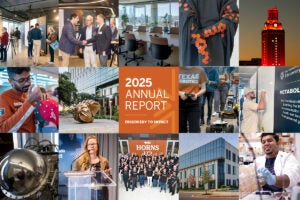It started in 1974 with one young lawyer, Al Perez, a native of Brownsville, Texas, who made this connection: If the Voting Rights Act of 1965 had ushered in greater political participation for African Americans nine years earlier, why couldn’t the same thing be done for the disenfranchised Mexican Americans of his home state?
The benefits of the 1965 Voting Rights Act on African Americans was evident. Before it passed, fewer than a third of African Americans in the Southern states covered by the Voting Rights Act were registered to vote; two years later, that number was up to 52 percent.
Elected office now seemed within reach for African Americans – only five African Americans served in Congress in 1965; 10 years later, that number had increased to 17 and many were serving in local positions. The Voting Rights Act had accomplished much in short order.
In 1975, Perez’s boss at the Mexican American Legal Defense and Educational Fund, Vilma Martinez, testified before Congress that in Texas, only 2 percent of Mexican Americans held any kind of local, state, or federal office.
Other witnesses offered that election officials often turned away eligible registered Mexican American voters. There were unannounced changes in polling places, or polling places that were difficult to reach. In some cases, Mexican Americans who became politically active lost their jobs, or otherwise suffered economic setbacks.
Congress later that year expanded the scope of the Act to protect language minorities from voting discrimination. Congress defined “language minority” to mean “persons who are American Indian, Asian American, Alaskan Natives or of Spanish heritage.”
That was an enormous step forward for Latinos: it advanced the civil rights of Mexican Americans, it established Latinos on the national stage, and finally, and most importantly, it put local and state officials on notice that they could not circumvent the intent of the act.
It’s now been 40 years since the passage of the 1975 expansion which added protections to language minorities in Alaska, South Dakota, Texas, Arizona, California, Florida, and New York, a remarkable accomplishment for the minority electorate.
But today, the Act is essentially toothless in protecting the voting rights of minorities.
In 2013, the U.S. Supreme Court ruled 5-4 to overturn the formula used to administer Section 5, the so-called “preclearance” provision of the Voting Rights Act that called on local and state governments to secure that federal approval before instituting changes.
Since then, new challenges to voting rights have emerged, often as state Voter ID laws.
So in what way might the most helpful part of the Voting Rights Act be reinstated to ensure greater minority participation? The two most likely avenues are not so promising.
President Barack Obama has called on Congress to restore the Voting Rights Act; but as he’s held little sway over that branch, the chances of that happening is remote. Equally iffy is a legal challenge that has been filed with the Supreme Court that would essentially neutralize the basic tenets of the Act.
Proponents believe that the Supreme Court ought to take the case and strike down voter discrimination once and for all. But whether the highest court accepts the case, and then come down on the side of greater protections is anyone’s guess.
In light of that, it’s time for the same resourcefulness that created the 1975 legislation. Political parties must not only ask for the Latino vote; they must also make serious efforts to ask Latinos what they think, what they want – and then invest in mobilizing Latinos.
And Latinos must demonstrate resourcefulness in getting voters to come out this next election. One group in Texas is organizing an effort to get volunteers to drive 10 voters to the polls in 2016. That commitment is exactly what is called for, and targeted toward Latinos.
Efforts must be made so that Latino political gains made since 1975 aren’t lost: Latinos must be fully integrated into their communities, their state and the country, at all levels.
The Latino electorate won’t be starting from zero: the advancements made over the 40 years since the Voting Rights Act reaped substantial positives. It all began because one young Brownsville native had the audacity to ask: why not Texas? Now we just need to protect it and foster more change so that the voting rights of all Texans are not lost.
Maggie Rivas-Rodriguez is an associate professor of journalism at the Moody College of Communication who heads the Voces Oral History Project at The University of Texas at Austin, which has interviewed Al Perez and others responsible for creating the 1975 Voting Rights Act.
A version of this op-ed appeared in the Huffington Post, Houston Chronicle, Corpus Christi Caller Times and the Rio Grande Guardian.
To view more op-eds from Texas Perspectives, click here.
Like us on Facebook.



